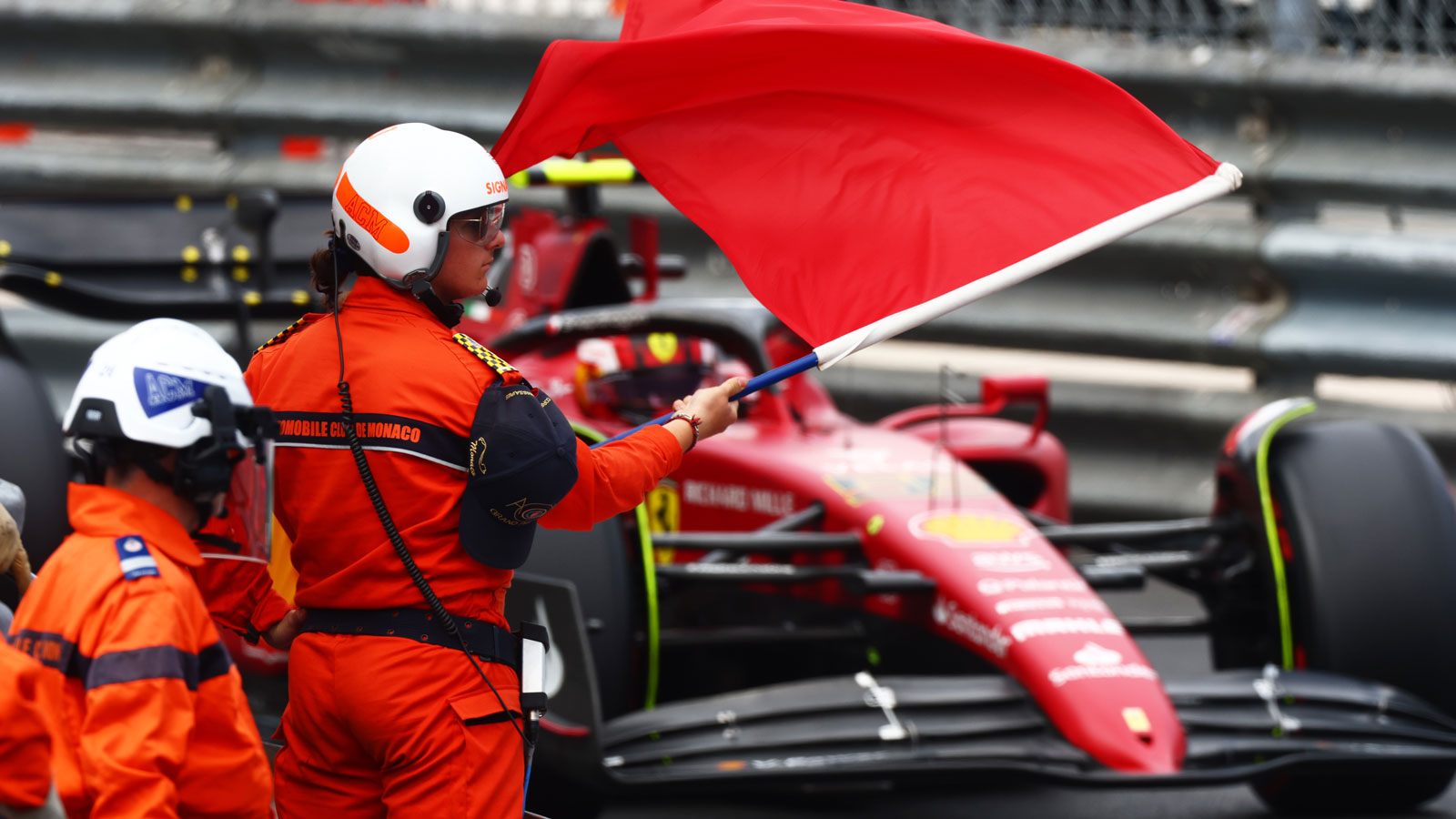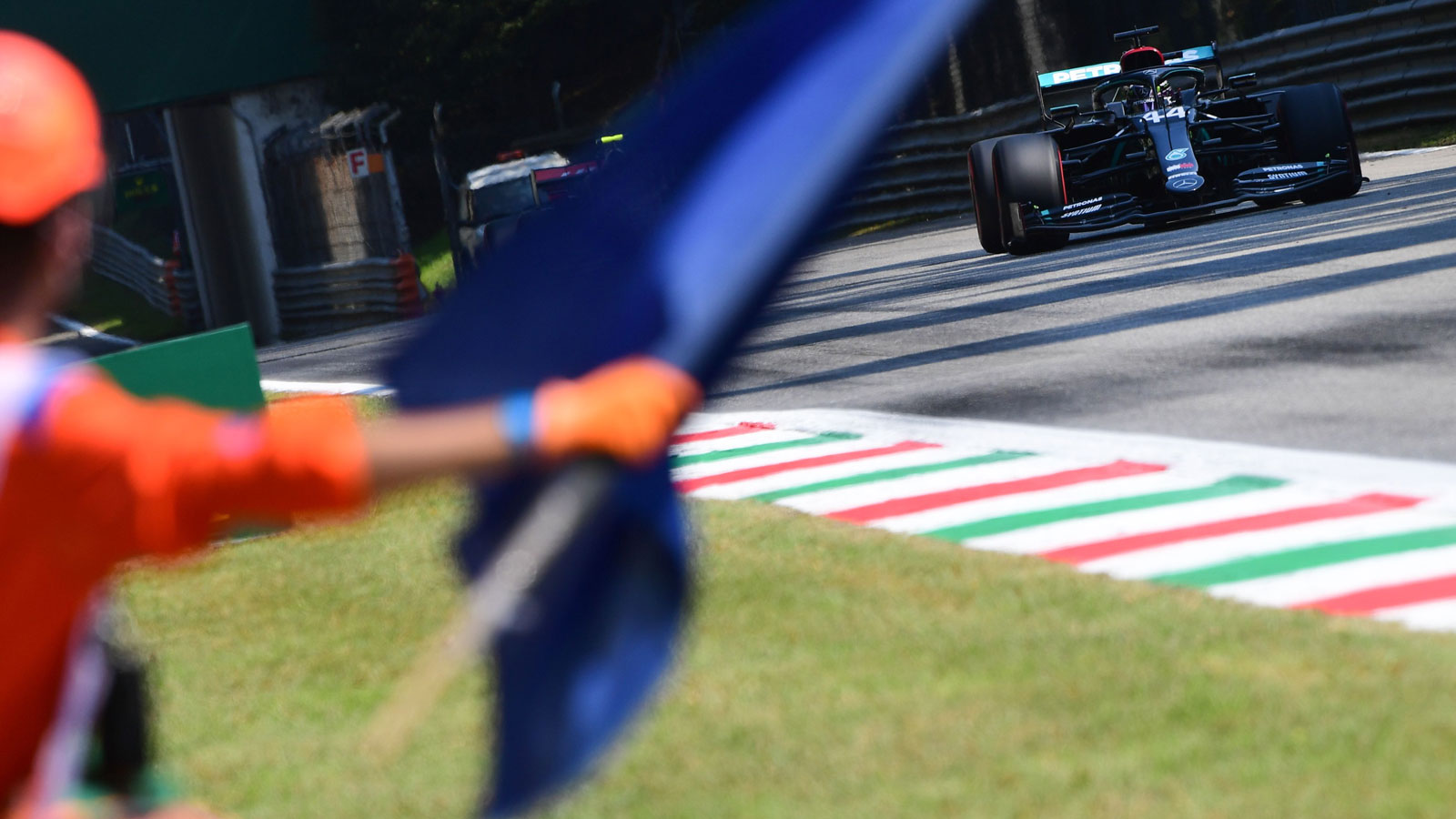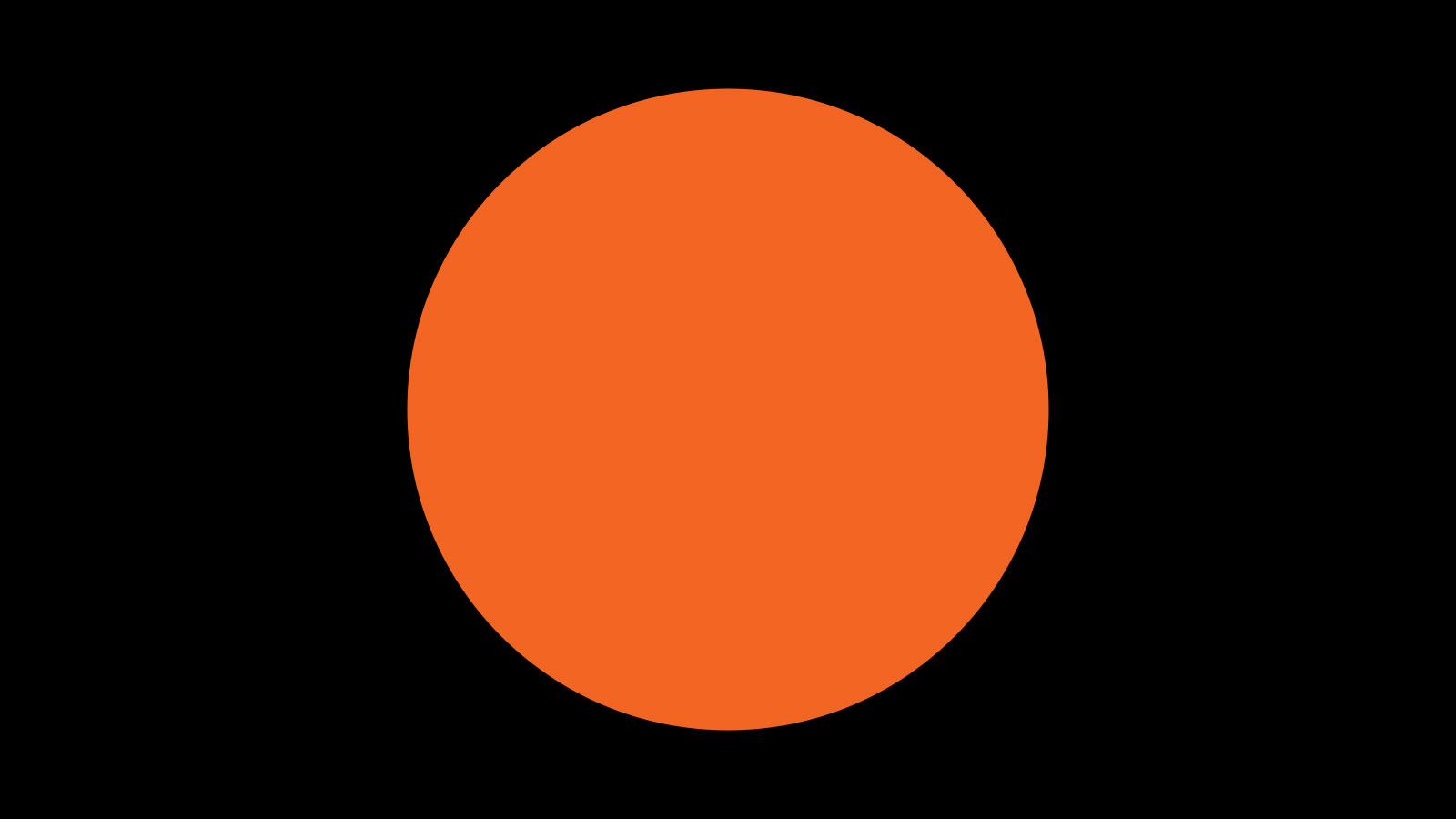Formula 1 Flags, Explained
There are 12 flags and multiple messaging tools used to inform drivers on the Formula 1 circuits. Here's a guide to help you decipher them at the next race.
During this weekend's Formula 1 race in Baku, Azerbaijan, we were treated to a rare appearance of the black and orange flag. The black flag with an orange spot in the middle is one of 12 different color-coded messages that can be used by marshals to signal to drivers. But, what do all these colorful flags and lights actually mean?
Well, with nine different flags and a host of light panels now used to show F1 drivers various nuggets of important information, we thought it was a good time to run through what all these colorful messages really mean.
In total, there are 23 different messages that the FIA can convey to competitors at events through the use of flags and electronic light panels. Of those, 12 are regularly seen in Formula 1 while others are reserved for different series.
Flip through the following slides to see what all 12 of these different symbols, flags and color combinations mean to the F1 drivers as they hurtle 'round a circuit at 200 mph.
Green Flag
Let's start with the easy one, the green flag.
As you might have guessed, green means go. This flag is waved by marshals after any debris or obstructions have been cleared off the race track following an incident.
The green flag is also waved to signal the start of a session, such as behind the grid following the parade lap prior to race start.
Red Flag
If green means go, red obviously means stop.
The red flag comes out whenever there has been a particularly dangerous incident that has left a car or its remains strewn across the track. It is also brought out when safety equipment has been compromised by a crash, especially safety barriers.
When the red flags flies, the race or session must come to a complete stop and all cars should return to the pit lane.
The 2021 season holds the record for the most red-flagged races during a year, with six events coming to a halt over the course of the season.
Yellow Flag
A much more common site in F1 is the yellow flag, which is waved by marshals whenever there is danger ahead.
When the flag is waved, it applies to a set sector in the track. While drivers pass through that area, overtaking is prohibited and they should slow down. If double yellow flags are waved, drivers should be prepared to stop.
In addition to marshals waving yellow flags, lighting panels around the circuit will also flash yellow, along with a warning that appears on the drivers' steering wheels.
Checkered Flag
Everyone's favorite flag, the black and white checkered flag. This one waves to signal the end of the race, starting with the race winner. Your job is done — head to the podium or pack up. Thanks for coming.
White Flag
Another safety flag you might see from time to time is the white flag.
This one is waved whenever there is a slow moving vehicle on the track. This could include trucks or tractors on hand to lift a stranded car off the track, so it will usually wave alongside a yellow flag or safety car marker.
We do want to acknowledge that the white flag in most other racing series, is used to indicate the final lap of a race.
Blue Flag
The blue flag is seen when a slow moving car is about to be lapped by one of the leaders, typically Nicholas Latifi of Mick Schumacher.
Any car that is shown the blue flag should move off the racing line and allow the quicker car to pass when it is safe to do so. Cars can be shown up to three blue flags signaling that they should let a car pass. If they don't let them by after three warnings, they could face a penalty for impeding another racer.
Black and White Flag
It's black and white, but it doesn't mean the race is over. Instead, this flag consisting of a black and a white triangle is viewed as Formula 1's answer to soccer's yellow card.
It's a warning flag that is shown to racers to tell them that they're on their final chance. These days, it is often waved when competitors are exceeding track limits or other instances of "unsportsmanlike behavior." If drivers don't take note of the warning, they may be shown a black flag.
Black Flag
It's all-black and means you're all out of chances.
The black flag signals a driver must head straight to the pits and that driver's race is ended. This is usually waved for anyone who has massively violated the sport's rules. You've been disqualified from the race.
The last time the black flag was used in F1 was 2007. During the Canadian Grand Prix, both Felipe Massa and Giancarlo Fisichella were pulled aside for passing a red light when leaving the pits.
Black and Orange Flag
The flag that started it all, the black background with an orange circle in the middle.
This flag, shown to Yuki Tsunoda after his DRS flap broke in the Azerbaijan Grand Prix, is waved for any driver that has a mechanical problem with the car. When it's waved, the driver should head straight to the pits for urgent repairs.
It's often waved for bodywork that is hanging off a car so that it can be safely removed in the pits, rather than flying off into the racing line.
Red and Yellow Flag
Alternating red and yellow stripes cover this flag, which is shown whenever the track is slippery. It's often waved to alert drivers to oil that could have spilled from a car onto the track, or if the track is very wet.
The flag can also be rocked back and forth, instead of waving, to warn drivers that there is a small animal on the course.
Safety Car Board
This is a black box with an orange border and the letters "SC" in the middle, which is shown on one of the lighting panels around a track.
It means the safety car is out on track and drivers should line up behind it. The light up panel is also joined by a white board with black lettering, which is held up by marshals as they wave yellow flags.
Overtaking is not allowed under safety car conditions, and all drivers must stick to the pace set by safety car driver Bernd Mayländer.
Virtual Safety Car Board
Similar to the full Safety Car Board, this one has a black background and yellow border with the letters "VSC" in the middle.
This is shown whenever the virtual safety car is deployed following a collision or other on-track issue. When the VSC board is illuminated, drivers should cut their lap time by around 30%. This neutralizes the pack and ensures everyone stays in the same position in the race. Unlike a full safety car, the drivers are not all bunched up with the VSC is deployed.












